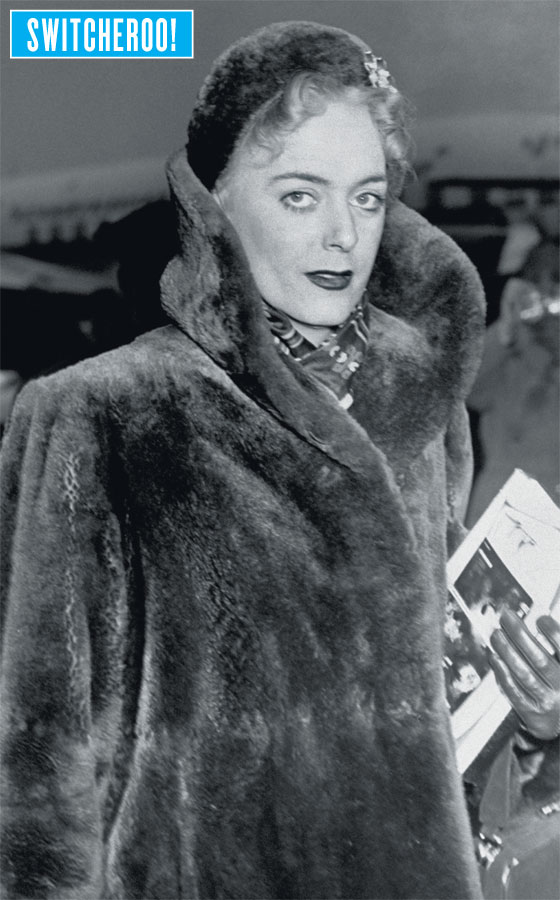
1953
Editor and Publisher estimated that more newsprint had been devoted to sex-change pioneer Christine Jorgensen in 1953 than to any other individual. Jorgensen had been a frail Bronx boy named George who after a stint in the army, hormone therapy, and a trip to Denmark, became Christine. In her autobiography, she describes the aftermath of surgery:
The door opened and a neatly dressed young woman entered; a complete stranger to me. “I’m afraid you have the wrong room,” I said. “Who are you looking for?” “Are you Miss Jorgensen?” “Yes.” “I have a telegram I think you should read.” I thought there might have been a death in my family. I reached out to take it from her hand, and read the message: BRONX GI BECOMES A WOMAN. DEAR MOM AND DAD SON WROTE, I HAVE NOW BECOME YOUR DAUGHTER.
I read it again, not really comprehending, until I realized at last that it had not been addressed to me: It was a message sent over an international press-service wire, and what I held in my hand was a copy of the dispatch. “Who did this unforgivable thing?” I asked.
She answered me quietly and sympathetically. “I truly don’t know,” she said. “You’ll have to prepare yourself, Miss Jorgensen. Tomorrow’s newspapers will carry this story in banner headlines. I’m a reporter for Information. Will you give me an interview?”
It seems to me now a shocking commentary on the press of our time that I pushed the hydrogen-bomb tests on Eniwetok right off the front pages. A tragic war was still raging in Korea, George VI had died and Britain had a new queen, sophisticated guided missiles were going off in New Mexico, Jonas Salk was working on a vaccine for infantile paralysis. Christine Jorgensen was on page one.
Excerpted from Christine Jorgensen: A Personal Autobiography. (c) 1967 by Christine Jorgensen. (c) Renewed 2000 by the Motion Picture & Television Fund. Published by Cleis Press.